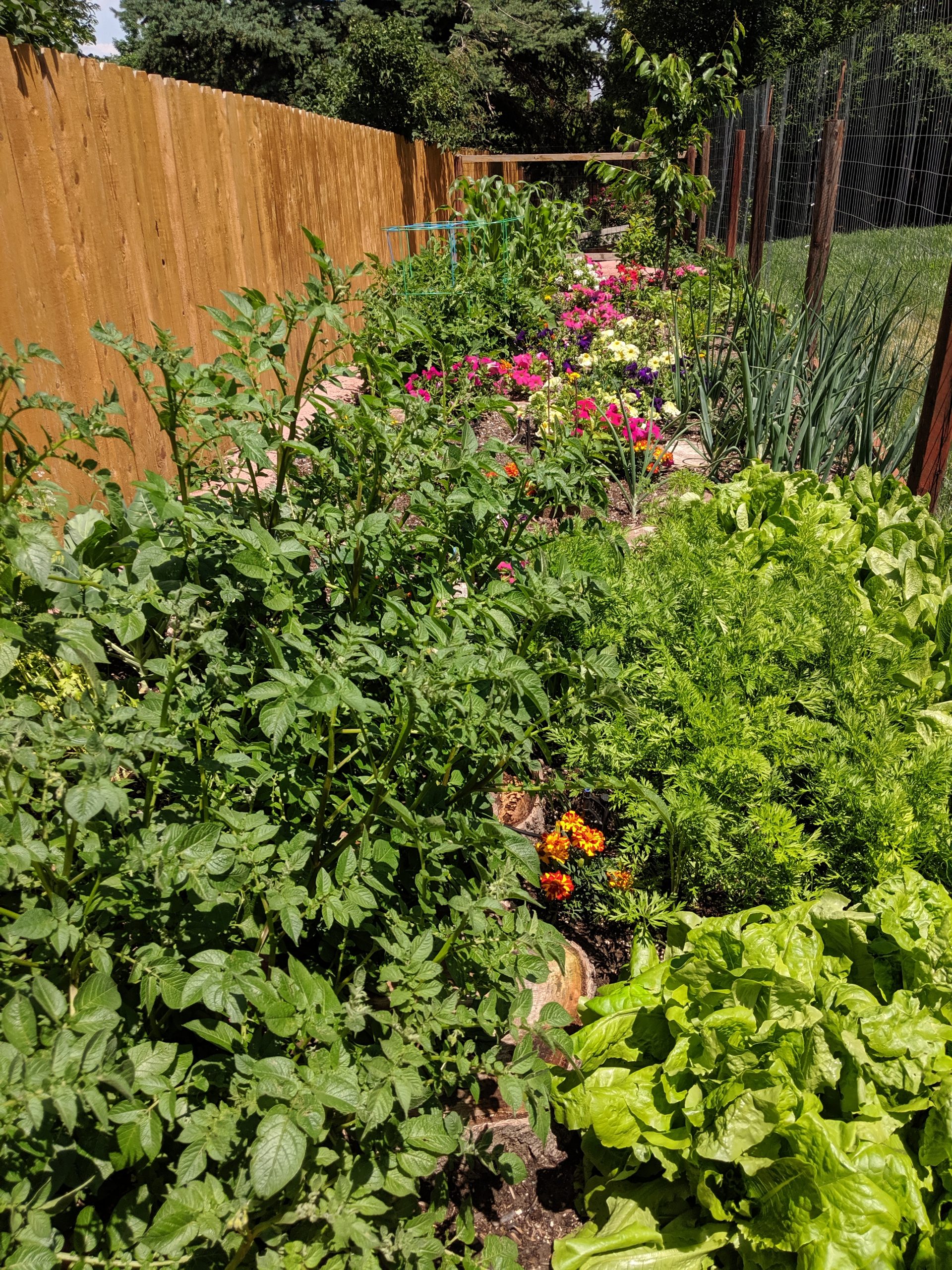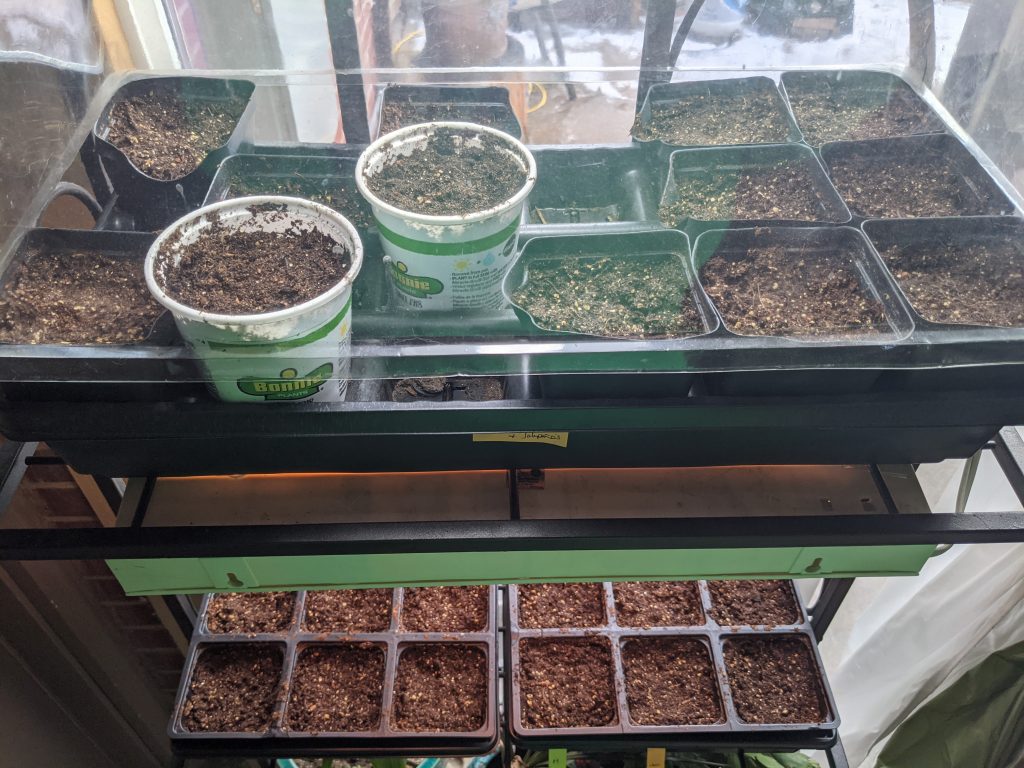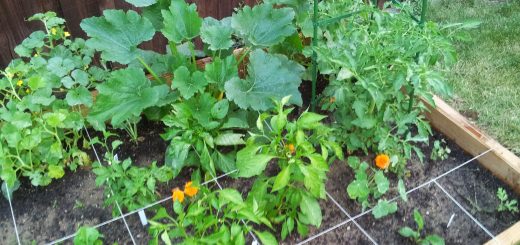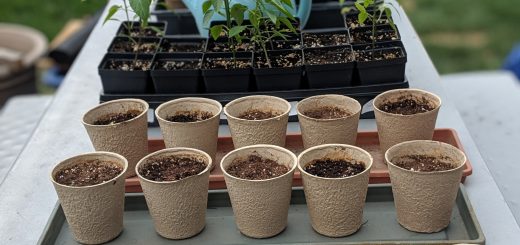Getting Ready for the Growing Season

It’s around this time each year that I start thinking about my garden and getting ready for the upcoming growing season. While there isn’t a whole lot to get done, timing is important. If you live in a warmer climate, I am sure the list is far different from mine. Here in Colorado, getting the most out of each growing season is paramount to a successful harvest! This post will be centered around vegetable gardening, but I also have work to be done for both the xeriscape garden out front as well as some preventative maintenance on our fruit trees.
The safe planting day here is Mother’s Day. I tend not to stay on the safe side of things, however. If I can tell that we have at least a week of temps above freezing, I will often plant a week or two earlier. Many people disagree with me, but here’s my logic: I have a 50/50 chance of everything getting wiped out by hail after the safe planting day, so how safe is that day really, anyway? There are many times I haven’t been able to plant until that day because of weather, only to have everything shredded a week or two later. So, I choose to hedge my bets. Sometimes it works out for me, and sometimes it means I am out there in the afternoon covering everything with buckets and Tupperware. Ha!
Starting Seeds
Because I always hope to plant a week or two early if possible, I try to start some of my seedlings in February. Not everything, mind you. Primarily the nightshades, as they take a bit of time to get to a decent size. I prefer them to be a little on the bigger side because I want their root systems to be big and strong. I also want them to start fruiting as soon as possible. There’s nothing worse than having 200 tomatoes on plant that can’t ripen in time because of a fall weather change.

Currently, I have a little over two dozen nightshade seedlings in my sunroom in various stages of sprouting. Some won’t be poking their heads out for another week, at least. This year I am growing 4 roma tomatoes, 12 hatch green chilies, 4 jalapenos, 3 poblanos, 3 hybrid peppers (a new experiment), and two tear drop peppers which will stay inside this year as I’ve not had luck with them outside. Everything else I plan to start inside will be started and staged according to their growth rates and needs.
Prepping the Ground
In March the focus turns to soil. Soil is a truly underappreciated aspect of the garden. I know that I must tend to it before I ask it to care for and nurture my harvest. Given my small space garden, I also realize that it doesn’t get much of a chance to recharge on its own, and after a full season of square-foot gardening, where I’ve maximized what I can get out of the soil, it needs my help to be ready for the next season. The two most important things for me are nutrient density and permeability.
I want the garden to be nutrient-rich, but also light enough that it drains well. My amendments begin with compost (both our own and some store-bought if needed to achieve the right amount). In addition to the compost, I will occasionally add peat moss (although I try to steer clear of it for environmental sustainability reasons). Another good option, if your garden is not too big, is perlite. My newest amendment experiment: pine shavings. During occasional chicken coop cleanings over the winter, I have been placing a little of the shavings and chicken poo into the garden. I have yet to see whether this will be a good thing or a bad thing, and I do worry about nitrogen levels and pH. The key, I think, is allowing it to sit on top of the soil and age a bit. This summer, I am going to experiment with bucket vermicomposting directly in the garden as well!
By the end of March, it’s time to take all these amendments and turn the soil (assuming my soil isn’t a frozen block)! Once that is done, I am ready to start my early-season plants: lettuce, spinach, potatoes, and others. While I sit here and look out at the frozen tundra that is my front yard, I can’t help but feel excitement about the next couple months. Looking at my babies growing in the sunroom helps too, of course. Here’s to a successful 2021 season!




Recent Comments